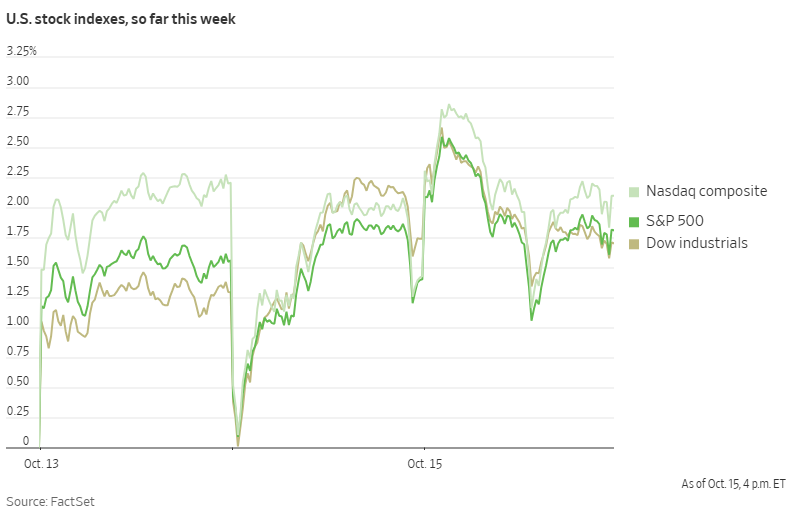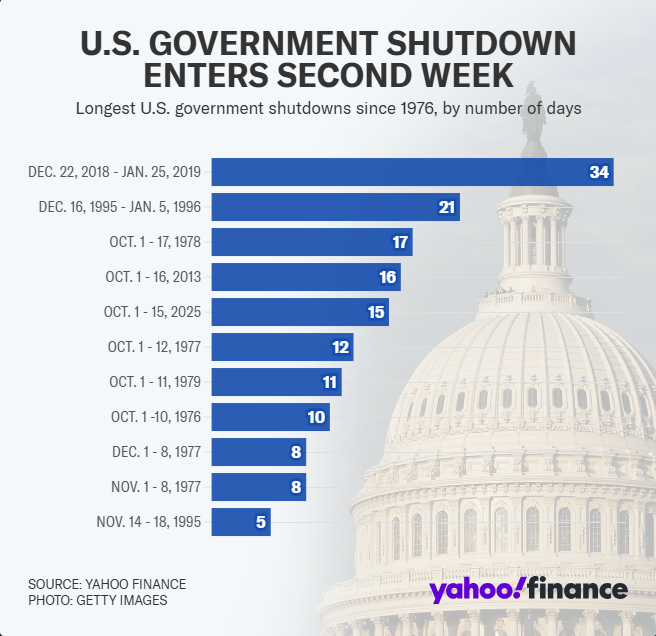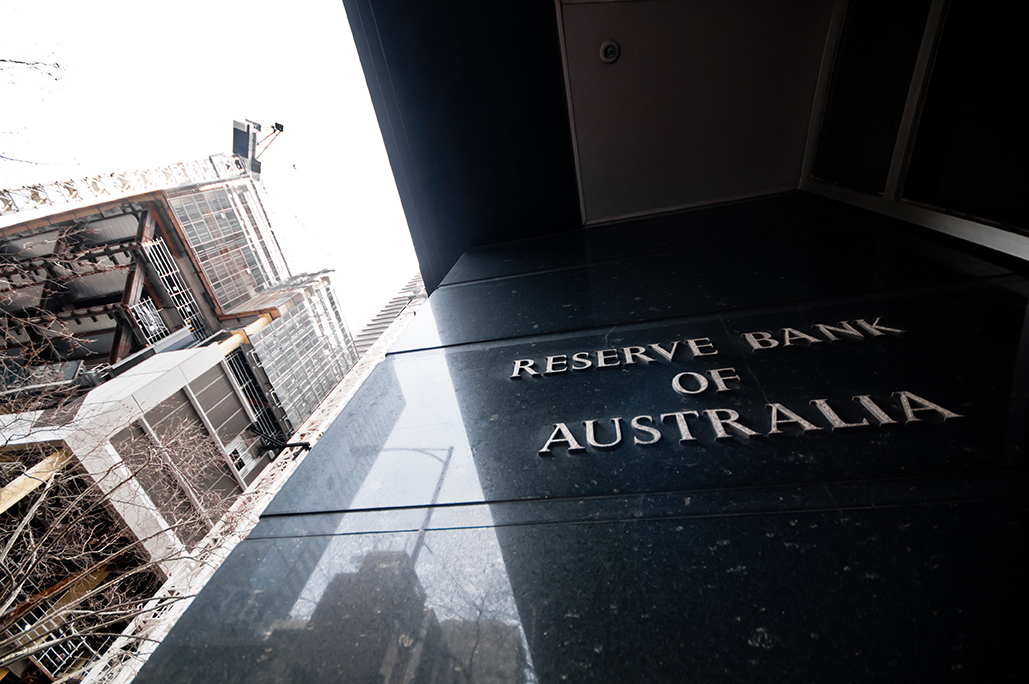ข่าวสารตลาด & มุมมองเชิงลึก
ก้าวนำตลาดด้วยมุมมองเชิงลึกจากผู้เชี่ยวชาญ ข่าวสาร และการวิเคราะห์ทางเทคนิค เพื่อเป็นแนวทางในการตัดสินใจซื้อขายของคุณ.

S&P 500 and ASX Rally as Big Banks Drive Markets
Both the S&P 500 and ASX have rallied on the back of stronger-than-expected major bank earnings reports on both sides of the Pacific.
In the US, Bank of America reported a 31% year-over-year increase in earnings per share at $1.06, exceeding Wall Street's estimate of $0.95. Meanwhile, Morgan Stanley delivered a record-breaking quarter with EPS of $2.80, a nearly 49% increase from the same period last year.

On the Australian front, the benchmark ASX 200 leapt 1.03% to 8990.99, with all four major Australian banks playing a major role. CBA closed 1.45% higher, Westpac 1.98%, NAB 1.87%, and ANZ 0.53%.
These strong bank results indicate broader economic strength, despite recent concerns about US-China trade tensions. US Treasury Secretary Scott Bessent emphasised that Washington did not want to escalate trade conflict with China and noted that President Trump is ready to meet Chinese President Xi Jinping in South Korea later this month.
With the third-quarter earnings season just getting underway, these early positive results from financial institutions could prove as the start of continued market strength through to the end of the year.
U.S. Government Shutdown Likely to Last Into November
Washington remains gridlocked as the U.S. enters its 16th day of shutdown. With no signs of compromise on the horizon, it appears increasingly likely the shutdown will extend into November and could even compromise the Thanksgiving holiday season.
Treasury Secretary Scott Bessent has warned "we are starting to cut into muscle here" and estimated "the shutdown may start costing the US economy up to $15 billion a day."
The core issue driving the shutdown is healthcare policy, specifically the expiring Affordable Care Act subsidies. Democrats are demanding these subsidies be extended, while Republicans argue this issue can be addressed separately from government funding.
The Trump administration has taken steps to blunt some of the shutdown's immediate impact, including reallocating funds to pay active-duty soldiers this week and infusing $300 million into food aid programs.
However, House Speaker Mike Johnson has emphasised these are merely "temporary fixes" that likely cannot be repeated at the end of October when the next round of military paychecks is scheduled.

By the end of this week, this shutdown will become the third-longest in U.S. history. If it continues into November 4th, it will surpass the 34-day shutdown of 2018-2019 to become the longest government shutdown ever recorded.
This prolonged shutdown adds another layer of volatility to markets. While previous shutdowns have typically had limited long-term market impacts, the unprecedented length and timing of this closure, combined with its expanding economic toll, warrant closer attention as we move toward November.
Trump Announces Modi Has Agreed to Stop Buying Russian Oil
Yesterday, Trump announced that Indian Prime Minister Narendra Modi has agreed to stop purchasing Russian oil. He stated that Modi assured him India would halt Russian oil imports "within a short period of time," describing it as "a big step" in efforts to isolate Moscow economically.
The announcement comes after months of trade tensions between the US and India. In August, Trump imposed 50% tariffs on Indian exports to the US, doubling previous rates and specifically citing India's Russian oil purchases as a driving factor.

India has been one of Russia's top oil customers alongside China in recent years. Both countries have taken advantage of discounted Russian oil prices since the start of the Ukraine invasion.
Analysis suggests India saved between $2.5 billion to $12.6 billion since 2022 by purchasing discounted Russian crude compared to other sources, helping support its growing economy of 1.4 billion people.
Trump suggested that India's move would help accelerate the end of the Ukraine war, stating: "If India doesn't buy oil, it makes it much easier." He also mentioned his intention to convince China to follow suit: "Now I've got to get China to do the same thing."
The Indian embassy in Washington has not yet confirmed Modi's commitment. Markets will be closely watching for official statements from India and monitoring oil trading patterns in the coming weeks to assess the potential impact on global energy flows and prices.
Chart of the Day - Gold futures CFD (XAUUSD)


We now have a post-Jackson Hole set of questions – will the data stick up to what was preached. Reviewing the reactions to Jackson Hole treasury yields declined on a ramp up in bets around the Federal Funds rate after Federal Reserve Chair Jerome Powell's dovish remarks, which were in line with what we forecasted last week. His dovish remarks were enough to shift market expectations for the September Federal Open Market Committee (FOMC) meeting not just towards a potential rate cut, but to a possible heavier cut (50 basis points or more).
Current market pricing for September is above 30 basis points suggesting it is keeping some of its powder dry ahead of the mid-September meeting. But it wasn’t the absolute nail in the hawkish view some were hoping. The current economic environment is making markets highly reactive.
Every piece of data that could indicate whether the U.S. economy is heading for a "hard" or "soft" landing is being scrutinised. That is particularly evident post the softer employment data released in early August, and thus we traders still have plenty of volatility to play with in the coming weeks. Jackson Hole in review Chair Powell's remarks at Jackson Hole signalled the shift in the Fed's focus we all expected.
But it is where the focus has shifted to that matters – the Board’s focus has shifted from inflation to labour market concerns. He emphasised that the Fed does not seek further cooling in labour market conditions and noted that the labour market is looser now than it was in 2019 when inflation was below 2%. While Powell did not specify the size of potential rate cuts, he indicated that the current policy rate gives the Fed ample room to respond to any risks, suggesting that rates are still far from neutral and could return to that level relatively quickly.
The market has taken this change in focus to pencil in the next most important date into its calendar – September 6. This is when the August employment data will be released, and it will be crucial in determining whether the Fed opts for a 25 basis point or a 50 basis point rate cut 10 or so days later. If the unemployment rate remains at 4.3% or rises further, comments suggesting that the labour market is “strong” would appear to be out of touch, and language like this sounds eerily similar to the previous underestimation of inflation being "transitory." So lets drill into what will be the biggest driver of FX and indices ahead of the September meeting - labour The Labour Market the Key to all In the coming weeks, the most critical economic data will revolve around the labour market, as its health will determine whether consumer spending and overall economic activity has remained strong.
The Bureau of Labor Statistics recently estimated that payroll employment as of March 2024 is 818,000 lower than initially thought. Think about that for one second, that is the entire population of the Gold Coast and 80,000 more or to put into Australian numbers its 60,000 jobs less than originally suggested. This has moved the average monthly figure down by 68,000 jobs for the period from April 2023 to March 2024 going from 247,000 a month to 179,000 a month.
The Fed needs to average 200,000 for the economy to be running at neutral. Although these revisions are not finalised until February 2025, the significance is clear - the jobs market is not as strong as previously believed and suggests like we discussed last week that the US could be skidding into a recession based on the Sahms recession indicator. Which is when the three-month moving average of the national unemployment rate is 0.5 percentage point or more above its low over the prior twelve months.
This was triggered in early August and we saw what that led to. What has also caught traders off guard is that historically, revisions to payrolls have been to the upside versus preliminary estimates, mainly due to delays in receiving more complete data from the Quarterly Census of Employment and Wages (QCEW). But when we look at periods of economic stress, take 2009 for example, the final estimates have sometimes shown even larger downward revisions than what we have seen this year.
This trend might be due to the overestimation of factors like the birth-death adjustment and part-time to full-time payrolls, which could be happening again now. If 2024 estimates are indeed overstated, it suggests that July's job growth was more likely to be 114,000 jobs, a figure that may not be confirmed until the next year's benchmark revisions. But a massive USD risk whatever the final figure turns out to be.
We stated last week that despite USD dovish trading over the past few weeks. It’s far from overdone. And we see the labour force data for the rest of the year being key to possible further selling Divergence Between Payroll Growth and Unemployment That brings us to the growing divergence between strong payroll job growth and rising unemployment.
We need to point out here this is not just a US phenomenon, Australia is seeing this situation as well, and it’s to do with the participation rate which is sneaking up. This means more people are falling back into the employment surveys suggesting unemployment might be higher than reported. So despite the robust employment growth figures – unemployment is on the rise faster than growth.
Housing Market Switching to the other great indicator for the Fed and FX traders alike – housing. Existing home sales rose modestly in July, yet new home sales increased at a surprisingly strong pace – however thankfully they remain within recent ranges. Despite a recent decline in mortgage rates (see the 30-year rates as the benchmark here), there has been no significant uptick in new demand, with mortgage applications for purchases remaining low and higher-frequency sales indicators still soft.
Although not on the same level as the labour market for FX movements, signs of overconfidence, increased mortgage applications and existing home sales spikes would get the FOMC’s hawks crowing again. These members have suggested that there hasn’t been sufficient housing stress yet to signal a hard sustained cutting cycle is imminent making housing data the contrarian trade indicator. The conclusion We retain the view that the USD is facing continued head winds, labour data is weakening, the economy is slowing to levels that suggest it could be flirting with recession and inflation is back in sight of the 2% handle.
There is also one other piece of information that allows us to retain our bearish view on the USD… Don’t Fight the Fed! – if they want to cut, they will take the USD with it.


Jackson Hole Symposium – When doves try Market pricing of the Federal Funds rate currently sits at 93 basis point of easing by year-end. Let us put that into perspective it was 110 basis points of easing at the peak of excitement, yet despite the increase in yields DXY has sold off and now trades sub-102.00 and is still falling like a stone. Why?
It's not like EUR/USD data from Europe is smashing USD bulls, European PMIs are expected to be around 50.1, a barely expanding outlook. So it's not that. Second point some are highlighting is the rise and rise of Vice President Harris.
The odds of her taking the Oval Office are mounting by the day. On the day it was announced she will be Democrats presumptive nominee her odds of winning according to Predictit.org was 45c now: She is odds on. Which has put her policies front and centre, including her latest announcement of possible increase to the corporate tax rate to as high as 28 percent.
That might explain DXY’s fall. But really it looks to be down to the only event that has mattered all year – when is the Fed going to cut rates? The off again on again nature of where the Fed sits has been down to the surprise rally in inflation in the March quarter and this has led to Board dissent, mis-matching communication and a general rudderless trading in bonds, FX and like as Powell and Co. faffed about.
That appears like its going to end this week as we turn our attention to Wyoming and the annual Jackson Hole Monetary Policy Symposium. Everything is gearing up to a Jerome Powell speech that will finally set the ship on a clearer path. Why do we think this?
Because history shows that Jackson Hole is normally when Fed Central Banks lay out their playbooks for the coming period. For example: In 2010 as the world and the US struggled to break out of the slump created by the Global Financial Crisis then-Fed Chair Ben Bernanke hinted (practically mapped out) the second series of Quantitative Easing, the bond-buying program designed to stimulate growth and maintain price stability. The markets responded fervently to the money taps being opened further, and the bulls that were long made a killing.
Then in 2020 Now-Fed Chair Jerome Powell announced a major shift in Fed policy framework, introducing average inflation targeting rather than the hard and fast figure of the previous generations. This meant the Fed would now be able to tolerate price fluctuations and periods of time where inflation might hold above the traditional 2% target before raising interest rates. This was in response to COVID and having the ability to flex policy due to the unforeseen nature COVID was creating.
In 2024 – will August 23 be another point for the history books? The doves certainly think so. Expectations are he will map out what the board is willing to tolerate around inflation as recent economic data points are a mixed bag which include: An easing Inflation rate, with July’s consumer price index falling below 3 per cent for the first time since 2021 but at 2.8 percent is still well off target and is falling at a slower pace than forecasted.
Consumer spending remains strong despite the first rate rise in the Federal Funds rate taking place over 20 months ago. July’s retail sales report showed a 1 per cent increase, well above expectations. Then there is the labour market, which was the cause of the recent market volatility due to what is known as Sahm’s recession indicator.
US non farm payrolls in the month of July came in at 4.4 percent - this is low by historical standards but it's the speed of change that triggered the Sahms recession indicator. Since 1950 every time the three-month moving average of the unemployment rate has risen by more than 0.5 percent from the previous 12 month low, The US has entered a recession. That's what is so telling for the market and why the doves are really trying to push The US dollar lower.
Powell is clearly facing a race against time in catching the economy and the unemployment rate before the handbrake in higher interest rates, which has been doing its job, stops working and causes the US to skid and crash. With all this as his “data dependent” input, Powell's remarks will be closely watched for further confirmation of an anticipated interest rate cut that is expected in September. As mentioned above the market has 93 basis points come year end.
With only three more meetings before the end of the year – one of the meetings could have a double notch cut associated with it. Will it be September? That is where Jackson hole comes in for the following reasons: A 25-basis-point cut may not be sufficient to prevent the economy from slipping into a recession, as higher rates make it more challenging for businesses to borrow and grow.
A 50-basis-point cut, on the other hand, risks reigniting inflation and sparking another speculative bull run in the markets, as cheaper borrowing costs could lead to increased risk-taking. Jackson Hole gives Powell the ability to test out the market’s appetite and concern, on this last point. If the response to a 50-basis point cut leads to speculative trading, and inflation fears before the September meeting then it will likely take the softer path.
If however the markets suggest this isn’t enough to ‘stop the skid’ then come December the 93 plus basis point cuts forecasted are on. Which brings us to the final point. Is the USD oversold?
In short – no. Yes, bearish beats are growing but looking at the likes of the EUR/USD, AUD/USD, GBP/USD and USD/CAD none of these are screaming oversold. In fact there is clear room for further runs particularly in the first two.
So set your alarm clocks – Jackson Hole is going to provide the playbook for the rest of the FX year.


In the words of one of the greatest supporting roles of all-time, this being Rafiki from the Lion King – It is time, (finally). We understand this is a bit tongue and cheek but the amount of false starts in 2024, we think it sums up what traders have been experiencing. So, we have reached the other side of the mountain.
The cuts are coming. The question now is by how much and how often. It is this question that we traders now need to address.
First let’s look to Thursday's September Federal Open Market Committee (FOMC) meeting. Current market pricing has the FOMC reducing the target range for the federal funds rate by 43 basis points, which puts the probability of a 50-basis point cut in the range of 65 to 70 per cent. This would bring the Federal Funds rate to 4.75 per cent from 5.00 per cent.
The consensus from the economic community also points to a 50-basis point cut. However, the number of 50-basis point worth of cuts versus 25-basis point worth of cuts sits at 24 to 20 suggesting a more conservative view than the headline figure. Our two cents on this using the recent communications from the Fed and barring more severe economic deterioration, we think the Committee will likely opt for a series of 25 basis point cuts going forward including Thursday’s meeting.
What is not disputed is whatever they do on Thursday it’s likely to be the beginning of a series of rate reductions aimed at recalibrating monetary policy to better align with evolving economic conditions – which as we have discussed over the last few weeks is pretty gloomy. So who is right on Thursday’s meeting and what else can we traders take out of the current FOMC environment. All the Talk – nothing is linear The future trajectory of US monetary policy will depend on several changing factors, labour market dynamics being the biggest one.
Take Federal Reserve Governor Christopher Waller’s recent remarks that emphasised the uncertainty surrounding the pace and total amount of rate cuts. He highlighted that these decisions will be data-driven and measured. While he believes “it is time” to begin cutting rates, the start should be a modest reduction as the data, while suggesting things are poor, are not flashing red.
He also remains cautious about making any definitive projections regarding the pace of future cuts. This is important for us – the market is basically pricing in an almost linear decline in rates through to August next year. Waller thinks it isn’t that clear cut - as he distinguishes between "softening" which it currently is doing in the labour market and a "deterioration” which would be out and out capitulation.
This suggests that aggressive action (such as 50 basis point rate cuts) would only be considered if there is a notable and sustained decline in employment. Now if we take Waller’s comments and marry them with New York Fed President John Williams as a clearer picture of the board’s thinking emerges. Williams uses the term "dial down" to describe the gradual reduction of rates and stressed that policy adjustments should move "to a more neutral setting over time." This is not the language of a Board considering hard and fast action on monetary policy.
Rather one that is looking for a steady, deliberate process. Which brings us to one of the more dovish players on the Board San Francisco Fed President Mary Daly’s – have a look at these words when asked about rate cuts: "regular cadence" in adjustments, this aligns with Waller and Williams remarks and suggest the expectation of a methodical approach rather than abrupt shifts is the better trading view. Now there are some caveats to what we have just presented.
Waller did not entirely rule out the possibility of larger cuts particularly if there was a sharp labour market contraction. The current economic outlook does not suggest such a drastic deterioration in the labour market, but Waller’s flexibility indicates the Fed’s readiness to act decisively if conditions worsen, so again not linear and the hard and fast option may still materialise. The Man himself: A Clear Path Forward This is all well and good but really what does the man himself think?
Gauging his plethora of talks, speeches, firesides and everything else that’s in the public domain Fed Chair Jerome Powell looks to be leaning into the expectation that rate cuts once started will be pretty consistent until it hits target. He has, like the others, emphasised that the path forward remains data dependent. What we think he will say going forward is that while inflation has not yet been fully tamed, the current stance of monetary policy remains restrictive enough to continue exerting downward pressure on inflation.
At the same time, expect him to point out that the Fed has room to lower rates while still working towards its dual mandate of maximum employment and stable prices. Specifically, Powell may highlight the need to prevent further slowing in the labour market, and that recalibrating rates downward is crucial to avoiding an unnecessary shortfall in employment. He is also likely to frame the upcoming rate cuts as a measured approach to bringing inflation back to target while safeguarding the labour market and broader economy.
Crystal balls – How far down the mountain So where does all this leave us? The consensus for the FOMC’s Dot Plot Projections reflect a path of gradual rate cuts. That same consensus is forecasting that the Committee will project rates approaching 3.00 per cent by the end of 2025, reflecting a moderate easing cycle designed to balance the need for inflation control with concerns about growth and employment.
Based on all of the above, expect the median policy outlook to include three 25 basis point rate cuts in 2024, followed by five additional cuts in 2025, and one final cut in 2026 to bring us down the mountain. This would bring the terminal federal funds rate to a range of 3.00 per cent to 3.25 per cent, although don’t be surprised if the forecast ends with the rate slightly lower, in the 2.75 per cent to 3.00per cent range, aligning with the Fed’s longer-term rate expectations. So it is time – tomorrow’s FOMC meeting is likely to mark the beginning of a rate-cutting cycle, with gradual easing expected through 2024 and beyond.
Inflation remains a key focus but it is increasingly shifting its attention to preventing an excessive slowdown in the labour market, signalling a clear path towards further rate cuts while maintaining a balanced approach to managing economic risks.


With core CPI missing expectations and some slight deceleration in other areas such as retail sales an overall service economic activity. The RBA is likely to hold tight and not raise rates on Tuesday. We say this with some confidence, based on the communication coming from RBA governor Bullock.
She had emphasised the importance of the second quarter CPI print at the June meeting, despite providing hawkish rhetoric around the risk of rate rises and a stalling inflation story. This had led the market and many economists to suggest the possibility of a rate rise has now reduced to sub 10% coming into Tuesday's meeting. That clearly means that it's not still a possibility but all things being equal the likelihood now is negligible.
You can see that here in the charts of the Aussie dollar particularly against the JPY and the USD AUDUSD AUDJPY Given the preference for rate stability by the board, what's also interesting about the Q2 CPI figures is that it gives them a clear path to keep rate stability (their words) for the stable future. It suggests not only will August be a hold but suggests that the September meeting as well would likely be the same. However it can't be ignored that CPI was slightly ahead of forecast and thus the Statement of Monetary Policy (SoMP) coming up in a few weeks will be very interesting.
Because we expect forecast changes and are likely to show a slower progress towards target. So first and foremost, forecasts have to narrow to include the higher than expected year on year figure. The forecast for inflation at the May SoMP update didn't include the new Federal government’s $300 energy rebate or the Western Australian and Queensland governments respective energy rebate.
This will significantly lower the financial year 24 inflation rate but will simultaneously raise the financial year 25 forecast by a similar amount. Providing a bit of a catch 22 from the board. There's been upward revisions in consumer spending and are likely to challenge the forecast assumptions used in the May statement of monetary policy that was justifying a lower part of inflation.
All things therefore being considered the hawkish message coming from governor Bullock is likely to persist. Because as this chart shows core inflation and headline inflation in Australia is the highest against all major peers and despite the RBA having a 2 to 3% target band higher than its peers around 2% it is a long long way away from reaching its goal. It should therefore be pointed out that come the Tuesday decision making call “all options” as the RBA like to call it, realistically means a tight hold or a possible rate hike With the right hike being dismissed.
This means that there is a divergence going on between the RBA and the rest of the dovish global environment. You only have to look at what the Bank of England said last week to understand that something like AUDGBP has a neutral central bank with the hawkish bias dovish central bank with dovish action to see the pair likely moving slightly higher in the interim. The same argument could actually be made for the AUDUSD because post the CPI number as we explained last week The US Federal Reserve was due to meet.
And although the board didn't move the Federal Funds rate At the July meeting it is all but confirmed September is the likely start point for the Fed’s right cutting cycle. The US has seen some pretty mixed data over the last six days. Unemployment has ticked up; retail sales ticked down; inflation has moderated and forward looking indicators in consumer confidence and industrial manufacturing have both declined.
Couple this with the US election geopolitical risks and other factors explains the rally that has happened in the pair post the CPI data as seen here: AUDUSD Returning to the outlook for the US and the federal funds rate post the FOMC July meeting. 7 major economists are forecasting not just the September meeting with a rate cut but the remaining three meetings of the year will see cuts from Constitutional Ave. And if we take into consideration the FOMC’s dot plots the cuts will continue early into 2025 most likely at the February, March and May meetings. If this doesn't indeed come to fruition the impact on US indices will clearly be to the upside.
FX is likely to have to ask some serious questions around pricing in pairs such as the EUR, GBP and CAD. Which brings us back to the Aussie dollar The current sell off that we've seen in the currency is based solely on the idea the RBA is on a tight hold, and that selling is probably justified. However with the data that is currently before us it is hard to make a case that isn't bullish for the AUD as it gets left behind in the rate cut environment and dovish outlook the global economy is about to undertake.
Thus post Tuesdays meeting Michele Bullock's press conference will be key to this trade idea because it's likely to show you like she did in June that is going to have to continue on with the hawkish view and jawbone inflation lower.


Early voting has officially begun in several critical battleground states, including Arizona, Georgia, Nevada, and North Carolina signalling the start of an intense final stretch in the race for the presidency. Wisconsin and Pennsylvania have also now entered the early voting period and what is interesting in 2024 over 2020 is that Trump has backed early voting and this has seen record levels of Republican voters going early. For example - voter engagement in North Carolina and Georgia, has seen more than 1 million ballots have already been cast.
This surge in early voting represents 13 percent of North Carolina’s registered voters and 17 percent of Georgia’s, reflecting heightened enthusiasm and participation in this crucial election that is still sitting on razor thin margins. Despite the impressive numbers, caution is needed, and early voting turnout is not necessarily predictive of the final election outcome. Rules regarding the release of early voting data are strict.
States are prohibited from reporting any results until after the polls close on Election Day. Moreover, most key swing states don’t allow the counting of ballots until Election Day itself, making it difficult to gauge any meaningful trends from early voting alone. But what catches people’s attention is the amount of ‘registered party’ voters that are out particularly Republican voters – this however doesn’t necessarily translate to votes for this party or that.
Tightest Presidential Race in over 50 years National polls show an increasingly competitive race between Trump and Harris, with the gap between them narrowing as Election Day approaches. In recent weeks, Trump has managed to close in on Harris’s lead, especially in swing state polls, where he has shown slight but consistent improvement. Polling averages now indicate a virtual tie, with both candidates hovering within the margin of error in national surveys.
According to the polling aggregator FiveThirtyEight, Harris holds a narrow lead of 1.8 percentage points over Trump nationally, while Trump enjoys a slight 0.5-point advantage in key battleground states. Betting aggregator RealClearPolitics reports a similarly tight race, with Harris leading by 1 point nationwide, while Trump leads by 1 point in swing states. However, on the betting markets, RealClearPolitics have Trump 60.1 points to 38.2 points and a clear favourite – a trend that started on October 6 and has never slowed.
The back-and-forth dynamic suggests that Trump’s recent gains, coupled with a slight dip in Harris’s polling numbers, could indicate that he is winning over more independent voters or converting a portion of Harris’s marginal supporters. One recent poll conducted by the Washington Post/Schar School in early October provides further evidence of this highly competitive race. In their survey of likely voters in key swing states, Harris leads by a razor-thin 1-point margin, but all results remain within the margin of error.
The poll shows Trump holding the largest leads in Arizona (+3 points) and North Carolina (+3 points), while Harris has the upper hand in Georgia (+4 points) and Wisconsin (+3 points). This swing state polling underscores how critical these battlegrounds will be in determining the outcome of the election, with both candidates relying heavily on marginal voters who remain undecided or only tentatively committed. This election is shaping up to be one of the closest in modern U.S. history, with both candidates facing unprecedented levels of uncertainty.
Pollsters are warning that even a small margin of error could dramatically alter the outcome, particularly in swing states where the race is so tight. Polling in past elections has seen significant errors - most notably in 2016, when many polls underestimated Trump’s support, leading to an unexpected victory in several key states. While polling improved in 2020, it still underestimated Trump’s performance, albeit by a smaller margin.
In the 2022 midterms, polls underestimated the strength of Democratic candidates. These trends underscore the inherent challenges pollsters face in accounting for rapidly shifting demographics, small sample sizes, and voter behaviour that can be difficult to predict. In this context, a structural polling error could potentially allow either Trump or Harris to sweep the battleground states, dramatically altering the electoral landscape.
The polling community remains cautious, aware that even the most accurate forecasts in recent elections still had an average margin of error of 1 percentage point—enough to swing the outcome in such a close race. Which is why we as traders need to be mindful of confirmation and attention biases that can cloud trading judgement. Caution is Advised As mentioned, prediction markets have reflected a tightening race, but with Trump now emerging as a slight favourite in many forecasting models.
Despite this, we urge caution, pointing out that election prediction markets often have low liquidity, meaning they may not fully capture the nuances of voter sentiment or reflect real-world conditions as accurately as traditional polling. We also suggest - “Research, research, research” and from sources that both agree and disagree with your trading view and personal points of view. The election isn’t over, and trading in the USD and the bond markets tell us this is the case.
Plus, anything could happen in the next 14 days, both candidates are criss-crossing the country and the current funds being spent on the election has never been higher. Both Trump and Harris are ramping up their campaign efforts. Harris is slated to appear at a CNN town hall in Pennsylvania, an essential swing state, as part of her ongoing efforts to mobilize voters in the final days leading up to the election.
Trump on the other hand is spending most of his media time on his own social media channel Truth Social and other online media that is friendly to his views. Anything could happen here.


We are less than three weeks away from the ASX earning season and we are less than two weeks away from the earnings season in the US. So, we need to start prepping for trades and opportunities now. First and foremost, do not forget that confession season is well and truly upon us here in Australia.
Downgrades clearly have been coming from the discretionary sector; we've even seen companies hit the wall with the likes of Booktopia going into administration. There are some clear thematics that are growing in the Australian market. Energy, while the worst performing sector for the financial year 2024, may actually show you that earnings were slightly above expectation on higher than expected oil prices.
Materials led in the main by BHP, Rio and FMG Have once again benefited from higher than expected iron ore prices. It also benefited from a lower than expected AUD/USD where average FX prices were expected to be between $0.68 and $0.73 but instead have averaged between $0.63 and $0.67. What we're looking for is operational costs, overall margins and forward looking guidance, something that these firms have lacked in the last three financial updates.
Watch very closely for the excitement that will come from things like copper at the expense of the issues that are facing nickel lithium and other transition metals that have had really tough periods in FY24. Moving to the banks this is a sector people argue is fully valued. It's not hard to argue when through the financial year CBA made record all time highs several times and is still within a whisker of its record all time high.
Higher interest rates will indeed improve net interest margins. However, the unknown question and what we need to see at its August full year earnings is the impact higher rates are having on bad and doubtful debts, the possible increase in provisioning and more importantly the impact its having on new loans and refinancing. There is an argument to be made that banking is possibly fully priced and no matter what result is delivered won't necessarily create a leg further higher.
Finally, you can't go past consumer staples and discretionary. Retail sales numbers over the last 18 months have actually shown discretionary spending At or above 2022 levels although month on month figures have been erratic. The question that will come for discretionary spending is margins and how much sales revenue translates to the bottom line in earnings and profit.
Staples on the other hand have seen consistent movement on the revenue line but the question will be the margin and after the very targeted senate inquiry into supermarkets any sign profits are above trend may actually be met with concern as geopolitics raises its head. 33 times in 2024 the US 500 and the Tech 100 have made record highs – can it continue? Look into the US and the ending season that it is about to undertake. We have to look at several core thematics that are likely to be raised.
Artificial Intelligence (AI) The question you’ve got to ask is: is the time frame long or short? We raised this Mag 7 stocks etc Microsoft, Amazon, Alphabet, apple have clear potential. They are evolving their business models and see the integration of AI as the future of their individual businesses.
That will likely come up in their numbers but it will come with operational and initial upfront costs as the integration of AI begins. This is all long term may not fully capture short term opportunities which is still presenting very much in the semiconductor providers. NVIDIA and Advanced Micro Devices are taking full advantage and monetizing the compute cycle.
This clearly won't be forever because it will go from semiconductors to infrastructure to software and therefore the flows will move back towards the bigger end of town but overall the AI thematic still flows towards the semiconductors for now and that's likely to be shown in the earnings season that's coming. Data Centres That brings us to data centres because the potential for ensuring AI requires a heck of a lot of storage and a heck of a lot of processing. There are estimates the data centres will need to grow by 420% in Europe and 250% in the US by 2035 based on the rate of growth in AI right now.
Therefore, we need to watch providers like Dell Technologies and Intel which are big providers of data centres currently. We think the market hasn’t fully appreciated DC needs in the AI revolution. Cybersecurity The final key theme in the AI data centre technology space that we also think needs to be watched is cyber security.
It's been something along the lines of a 70% increase in ransomware attacks over the past 24 months. The regulatory requirements and the budgets required to deal with these increased threats is only just beginning. That brings players like Fortinet to the fore IT programmes and it's pensively to develop programs for enterprise makes it an interesting one going forward.
GLP-1 ‘Weight Loss’ Medicines Another theme of being a really strong driver of the S&P 500 is the rise of GLP-1 medicines. The weight loss craze that has come off the back of this Amazon has been incredible. Initially obviously developed for diabetes but having an additional effect of weight loss has created a product out of nowhere.
Eli Lilly and Co is a key player in this space with its GLP one class medicines already approved by the FDA. It's been launched in the US and its oral intake has posted adoption. It is not the only one in this space but shows very clearly the impact weight loss medicines are having on earnings.
The caveat we have though is side effects and long term impacts are still being found and could be said as a capping issue on price. Whatever way you look at it the US dating season however will be incredibly exciting and it is the reason The US markets continue to see huge capital inflows as they are much more exciting in this current environment than traditional value markets such as Australia.

